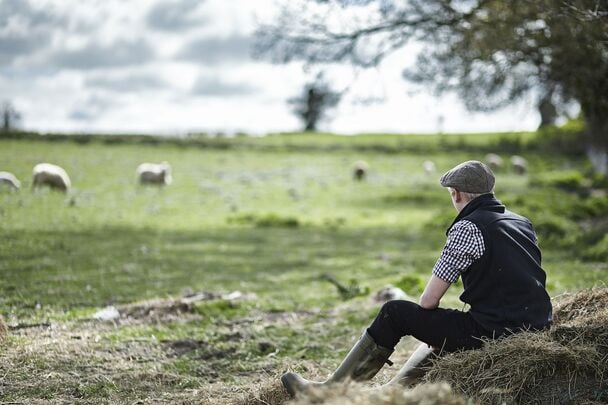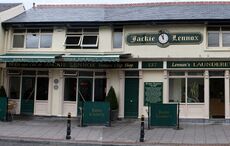A Donegal farmer made a historic find unearthing a 22kg slab of bog butter, believed to be one of the largest finds of its kind discovered in Ireland, possibly dating back as far as the Bronze Age.
During the excavation of a site on Michael Boyle's Portnoo farm, in County Donegal a slab of bog butter weighing between 22 and 25kgs was discovered.
Bog butter is a type of butter that has been preserved in peat bogs, some of it for centuries or even millennia. Bogs, which are wetlands with acidic, low-oxygen environments, act as natural refrigerators, preserving organic matter like butter extremely well. The butter, usually made from cow's milk but sometimes from sheep or goat's milk, was buried in wooden containers or wrapped in animal skins to preserve it or hide it from thieves.
Over time, bog butter takes on a distinct texture and flavor, often becoming waxy and acquiring earthy or pungent aromas. Some bog butter has been carbon-dated to over 5,000 years old, indicating that this practice dates back to prehistoric times. The reasons for burying the butter varied, from preservation to ritual offerings.
The Donegal farmer told the Irish Examiner that he was excavating a drain on his farm with a digger.
“It was just by pure luck that we came across it,” Boyle said.
“It does taste like butter, an unsalted butter at that. I had a sliver and I’m still here to tell the tale."
25-kilogram trove of "bog butter," largest ever, discovered in backyard in #Ireland.https://t.co/Z1ekadWt1H pic.twitter.com/osaNPUyoSW
— 𝚃𝚑𝚎 𝙻𝚘𝚜𝚝 𝚂𝚞𝚙𝚙𝚎𝚛 📘 (@lostsupper) September 28, 2024
“I could see this white thing in the ground. The minute I went down to it, I could get a smell off it and it was only about a foot into the ground.
“It's a perfect rectangle and was perfectly held together. It's completely greasy but completely preserved.
“I got this salty, cheesy smell immediately, there was no mistaking what it was.
“This is only clay ground here, but it maybe was bogland back in time.”
The Portnoo discovery is currently being analyzed by the National Museum of Ireland but it is hoped that it will eventually be displayed at the Kilclooney Dolmen Centre, in Kilcooney Beg, Donegal.
Archaeologist Paula Harvey, who visited the site of the discovery told the Irish News “The slab of butter wouldn’t mean anything to anybody visiting a national institution, but it certainly would mean an awful lot to the local community here in southwest Donegal."
Bogs are known for their preservative qualities and Harvey can attest to this having tried a "sliver" of the ancient substance.
She said “It does taste like butter, an unsalted butter at that. I had a sliver and I’m still here to tell the tale."
Harvey continued “People in bygone times were closer to nature, and were closer to the land than we unfortunately are, and they used everything and anything that they possibly could to preserve their food produce and this was just one method of preservation.”
Some archaeologists suggest that bog butter was not only a form of food storage but also had ceremonial or ritual significance. Its discovery in areas far from known habitation sites suggests that butter may have been deliberately placed in bogs as offerings, possibly for religious or spiritual reasons.
These offerings were often encased in wooden containers.
Harvey confirmed that this Portnoo slab of bog butter contained a "small piece of wood” which suggests that it was originally in a box that decomposed.
She believes this discovery is “one of the biggest chunks of bog butter found in Ireland to date”.
“Normally the bog butters are much smaller than the one we found."




Comments